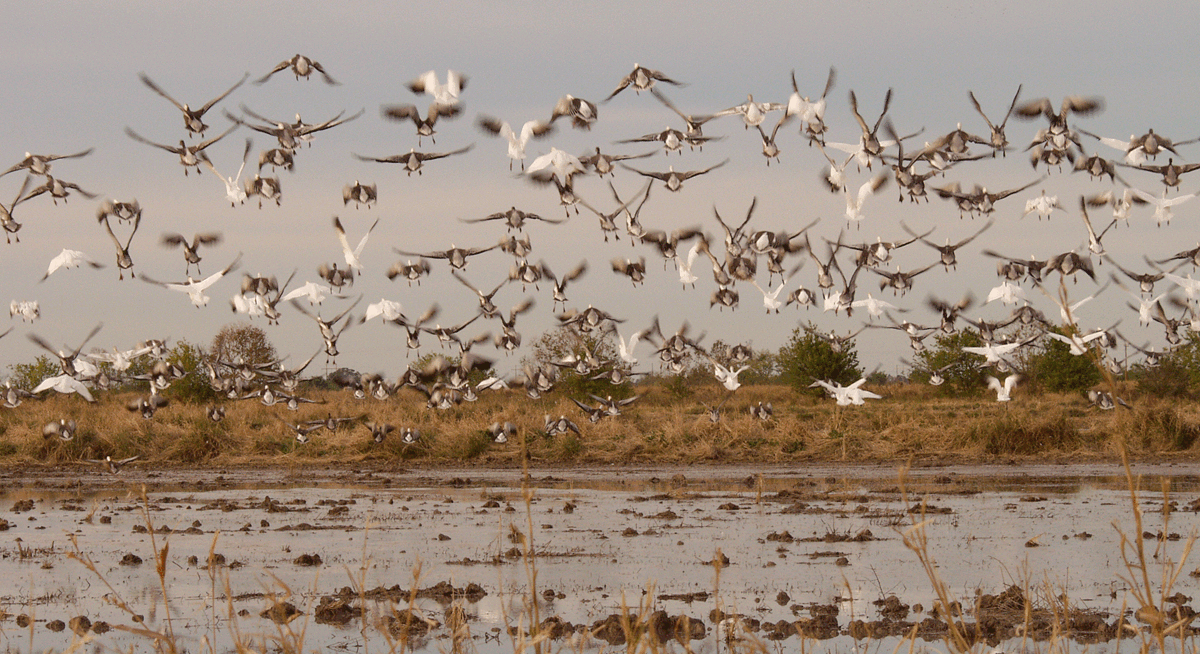Waterfowl and Texas
Waterfowl hunting in Texas is big deal. Each year, hunters across the state chase ducks and geese from the Panhandle down to the coastal plains. But very few of the birds harvested in Texas are produced here. The bulk of waterfowl breeding habitat is found much further north.
“Waterfowl habitat conservation has to take place not only here on Texas’ continentally significant wintering grounds, but also on the breeding grounds that produce our waterfowl,” Texas Parks and Wildlife Department (TPWD) Executive Director Carter Smith said.

“TPWD is proud to be a strong DU partner across North America. Ducks Unlimited’s match and leveraging ability give our contributions four times the impact we could have alone. That’s a return on investment we can all be proud of.”
Habitat Work for Waterfowl
During remarks at Ducks Unlimited’s 80th National Convention, Texas Parks and Wildlife Department Executive Director Carter Smith announced the department’s decision to award Ducks Unlimited $600,000 for habitat management projects on waterfowl breeding grounds in Prairie Canada.
This commitment brings Texas’ cumulative contribution for habitat conservation on Canadian breeding grounds important to Texas’ waterfowl to more than $4 million.
Habitat Work Funded by Texas Hunters
Recognizing the migratory nature of waterfowl, state wildlife agencies have been contributing to habitat conservation in Canada since 1965. More than 40 states participated this year, and funding comes primarily through hunting license sales. In Texas, all funding comes from the state Migratory Game Bird Stamp fund.
This fund is solely supported by the sale of Migratory Game Bird Stamps, required of all migratory bird hunters in Texas. These funds may be used to support waterfowl habitat conservation in Canada, and Texas has been doing so since 1985.
“The Texas Parks and Wildlife Department is one of our greatest partners in conservation in Texas and across the continent. They continue making wise investments in waterfowl habitat important to the birds that wing their way to the Lone Star State each year,” said DU Southern Region Director Jerry Holden.
“Banding data shows us a large portion of the ducks harvested in Texas come from Saskatchewan and Alberta, so investing the state’s dollars in this region clearly provides the greatest return for Texas waterfowl hunters.”
Waterfowl Breeding Grounds
Breeding ground habitat work is critical for the health of continental populations of waterfowl, and Texas’ waterfowl hunters understand that. The nearly 50,000 Texas DU members are appreciative of TPWD’s continued contributions to the program.
“The importance of state contributions to Canadian habitat conservation and restoration projects cannot be overstated,” said DU Canada’s Director of International Partnerships Pat Kehoe. “Individual state contributions are combined with other state contributions, matched dollar for dollar by DU Inc., used as match for North American Wetlands Conservation Act (NAWCA) grants and then leveraged further by DU Canada.”
Ducks Unlimited Committed to Waterfowl
Ducks Unlimited’s programs in the U.S. and Canada are science-based and consistent with the North American Waterfowl Management Plan. Prairie conservation programs on both sides of the border are structured to protect native, highly productive habitat while also improving waterfowl production in working agricultural landscapes.
These habitat projects have benefits far beyond waterfowl, including nature based flood protection, groundwater recharge, water quality enhancements and habitat for hundreds of species of wildlife.